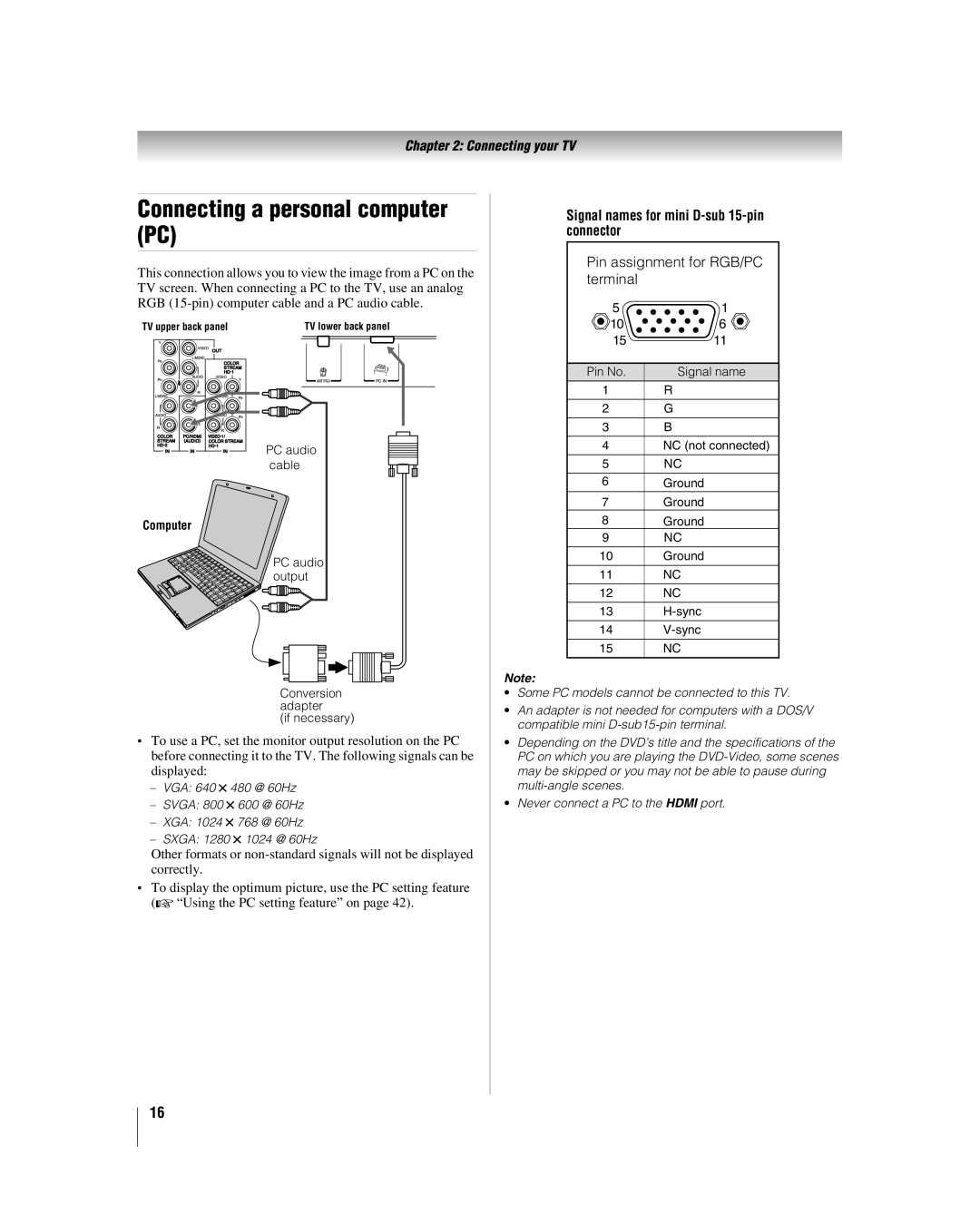
Chapter 2: Connecting your TV
Connecting a personal computer (PC)
This connection allows you to view the image from a PC on the TV screen. When connecting a PC to the TV, use an analog RGB
TV upper back panel |
| TV lower back panel | ||||||||
|
|
|
|
|
|
|
|
|
|
|
|
|
|
|
|
|
|
|
|
|
|
|
|
|
|
|
|
|
|
|
|
|
|
|
|
|
|
|
|
|
|
|
|
PC audio cable
Computer
PC audio output
Conversion adapter
(if necessary)
•To use a PC, set the monitor output resolution on the PC before connecting it to the TV. The following signals can be displayed:
–VGA: 640 5 480 @ 60Hz
–SVGA: 800 5 600 @ 60Hz
–XGA: 1024 5 768 @ 60Hz
–SXGA: 1280 5 1024 @ 60Hz
Other formats or
•To display the optimum picture, use the PC setting feature (- “Using the PC setting feature” on page 42).
Signal names for mini D-sub 15-pin connector
Pin assignment for RGB/PC terminal
5 | 1 |
10 | 6 |
15 | 11 |
Pin No. | Signal name |
1 | R |
2 | G |
3 | B |
4 | NC (not connected) |
5 | NC |
6 | Ground |
7 | Ground |
8 | Ground |
9 | NC |
10 | Ground |
11 | NC |
12 | NC |
13 | |
14 | |
15 | NC |
Note:
•Some PC models cannot be connected to this TV.
•An adapter is not needed for computers with a DOS/V compatible mini
•Depending on the DVD’s title and the specifications of the PC on which you are playing the
•Never connect a PC to the HDMI port.
16
